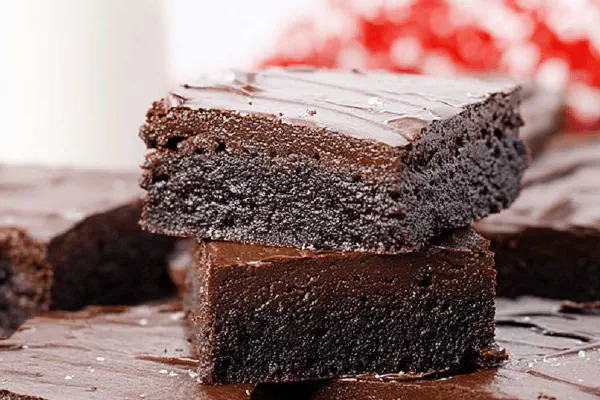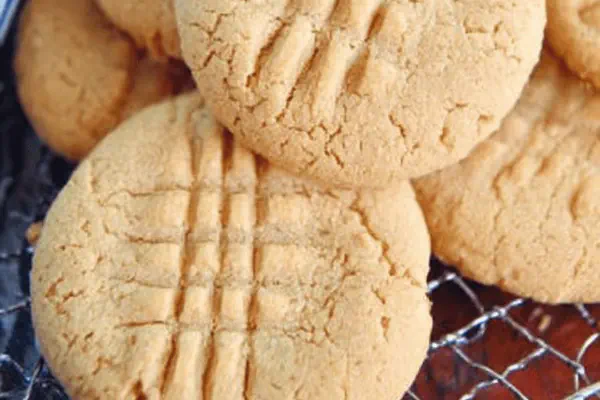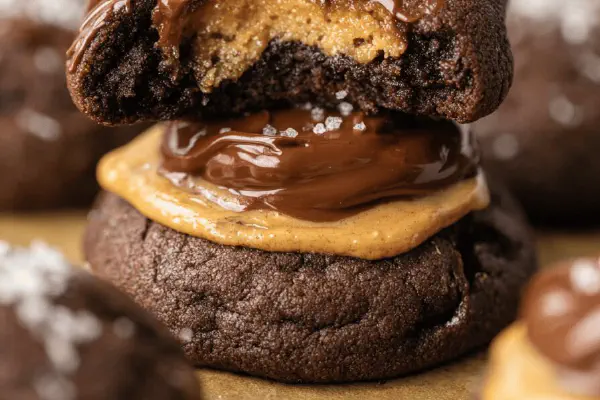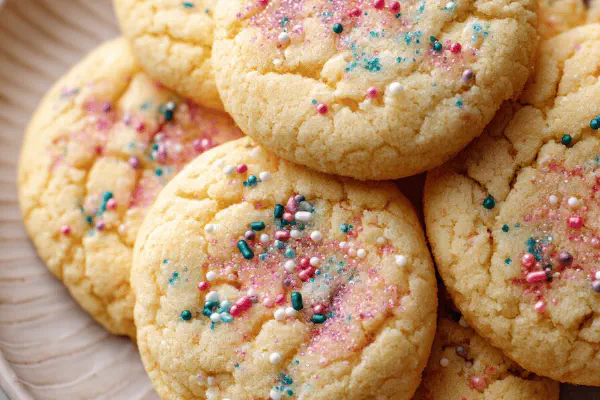Apple Caramel Cookies
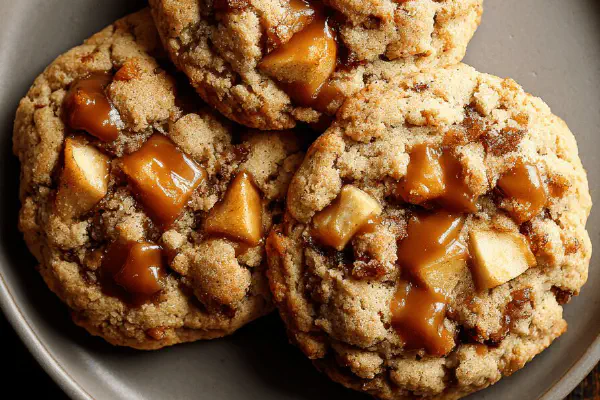
By Emma
Certified Culinary Professional
Ingredients
Apple Filling
- 40 g sugar
- 7 ml corn starch
- 2 ml ground cinnamon
- 1 ml ground allspice
- 3 medium tart apples (Gravenstein or Braeburn), peeled, cored, diced small
- 15 ml lemon juice
Cookies
- 270 g unbleached all-purpose flour
- 60 g oat flour
- 2 ml baking soda
- 1 ml salt
- 115 g brown butter (butter melted until golden nutty, cooled)
- 140 g granulated sugar
- 45 g light brown sugar
- 2 large eggs
- 75 ml salted caramel (store-bought or homemade)
- Coarse sea salt (optional)
About the ingredients
Method
Apple Filling
- 1. Toss sugar, cornstarch, cinnamon, and allspice in a saucepan off heat. Stir in apples and lemon juice evenly. Heat over medium until bubbling, 3-4 minutes. Apples should soften but stay chunked, not mushy. Stir often to avoid sticking or uneven cooking. Remove from heat. Cool slightly then chill uncovered for 25 minutes to firm up. Avoid overcooking or filling too wet; soggy cookies wreck texture.
Cookies
- 2. Move oven rack to middle. Heat oven to 175 C (347 F). Line two baking sheets with silicone mats or parchment. Do not skip lining; caramel sticks hard.
- 3. Whisk together all-purpose flour, oat flour, baking soda, and salt in a bowl. Oat flour adds chew and nuttiness, less dense than swapping all in.
- 4. Beat brown butter with granulated and brown sugars in a mixer until pale and fluffy. Brown butter adds caramel depth versus regular softened butter–a step I never skip now.
- 5. Add eggs one at a time. Mix until uniform. Reduce speed or switch to wooden spoon. Blend dry ingredients gradually in. Avoid overmixing. Dough thick but pliable.
- 6. Use a 30 ml (2 tbsp) scoop for even portions. Shape dough into balls, place 9 per sheet spaced well apart. Press down lightly to flatten just a bit. Use back of clean spoon to hollow out small cavities in centers; about 5 ml indentation, careful not to pierce dough too thin—watch edges to avoid spreading too much.
- 7. Spoon 8-10 ml apple filling into each cavity. Some spillage ok; the filling will bubble and caramelize slightly in oven. Fillings too runny cause flat bottoms; chilling filling helps.
- 8. Bake one tray at a time for 16-18 minutes. Edges firm, centers look set but soft and slightly sunken. Slight golden tint around edges signals doneness not just time. Hot oven, quick but controlled bake keeps chew intact.
- 9. Cool cookies on sheet about 15 minutes. Transfer to wire rack to cool completely or till almost room temp, about 40 minutes more. Cooling keeps structure stable.
- 10. Dollop about 10 ml salted caramel atop each apple-filled cavity. A little sea salt flakes scattered elevates contrast—don’t skip if you like sweet-salty play. Caramel adds gooey finish and slight crunch once set.
- 11. Store airtight at room temp 3 days, or freeze after cooling. Slightly warmed in microwave perks them back alive.
- 12. Common pitfall: dough too sticky? Chill for 20 min, use floured hands. Apples watery? Squeeze lightly on paper towels after cooking to shed excess juice.
- 13. Variations: swap apples for chopped poached pears or mix dried cranberries in filling for tart surprise. Caramel flavor can deepen with pinch smoked salt or chai spice blend added.
- 14. Notes: Brown butter aroma a fragrant warning—don’t burn it, it flips fast near end. Look for deep amber, nutty smell but no smoke.
- 15. This is a cookie for texture lovers: chewy edges, soft moist center pockets of fruit and caramel, interplay of sweet and acid and salt. Watch visual cues and trust your hands more than clocks for best results.
Cooking tips
Chef's notes
- 💡 Brown butter carefully. Watch foam; amber means done. Pull off heat fast. Too long burns bitter. Butter smell shifts. Nutty aroma signals flavor depth. Don’t rush caramelizing–slow heat works best here.
- 💡 Oat flour swap adds chew without heaviness seen in pure AP flour. Use partial oat flour for texture balance. If unavailable, add more AP but expect softer crumb. Keeps cookie moist but avoids dense chew.
- 💡 Apple filling temperature matters. Chill filling uncovered to avoid runny consistency. Hot filling spreads in oven causing flat bottoms and soggy texture. Cooling also firms fruit pieces–important for structure inside cookie.
- 💡 Pressing 5 ml indent in dough balls before baking traps filling better. Avoid too thin edges or filling seeps out. Proper indentation controls thickness so dough holds shape, prevents spreading or leaking caramel mess.
- 💡 Caramel topping after baking keeps shiny look and gooey finish. Adding sea salt flakes contrast sweet and cut richness. Salt flakes scatter last minute for texture pop. Skip if you want less salty but flavor dims.
Common questions
How to avoid soggy bottoms?
Chill apple filling well. Overly wet filling seeps, softens dough too much. Also don’t overcrowd oven trays. Use parchment or mats. Bake one tray at a time. Watch edges color, texture tightens there.
Can I substitute apples?
Yes, pears poached or dried cranberries mixed in filling. Tart fruit hold better, juicy but firm. Avoid too soft Ambrosia. Lemon juice brightens; don’t soak fruit or mash. Different fruits change moisture, adjust chilling time.
Sticky dough fix?
Chill 20 minutes, flour hands lightly. Sticky means warmth or excess moisture. Brown butter helps structure; don’t skip cooling melted butter before mixing eggs. Under or overmix affects texture too.
How to store cookies?
Airtight at room temp holds 3 days; after cooling to avoid moisture trap. Freeze for longer. Warm briefly in microwave to revive chewiness. Keep caramel topping intact; cold freezes firm caramel but less gooey.
